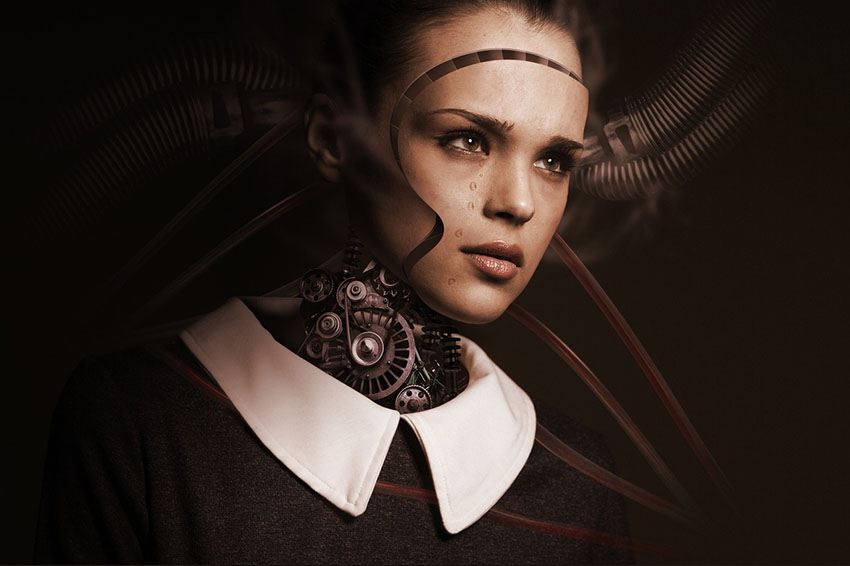When we think about technological changes over the years, Artificial Intelligence (AI) and the Internet of Things (IoT) have been two primary industry disruptors. But when combined, these technologies create many new opportunities for businesses, especially when it comes to data collection and analysis.
The Artificial Intelligence of Things (AIoT) is now beginning to take center stage as it transforms the way we live and work.
Over the years, IoT devices have become essential tools for gathering data from sensors and interconnected devices. The real-time data collection enabled by IoT has helped businesses to synchronize and streamline their operations.
By the year 2025, projections suggest that we’ll have over 42 billion IoT devices globally, pushing us toward a future where everything is interconnected.
But data gathering is just one facet of IoT, and it comes with its challenges. Generally, IoT devices need to use fixed algorithms to decipher the gathered data, and the increase in data quantities can often overwhelm these algorithms.
However, AI uses the data collected by IoT devices and analyzes it in real time. It then identifies correlations and learns from identified patterns. Combined together, AIoT blends data collection with detailed analysis, helping to create smarter systems.
The AIoT ecosystem is anchored together using three core functionalities:
- AI powers systems with functions that mimic human learning and reasoning.
- 5G networks offer quick and seamless communication between devices for faster data processing.
- Big data processes and stores massive amounts of data for AI to analyze.
What Are the Core Concepts in AIoT?
AIoT works by creating a network of intelligent devices that can communicate and work together while supporting five primary functions:
- Securely storing data with expandable storage capacities
- Centralizing data collected from different devices and sensors
- Analyzing large data sets
- Monitoring and controlling device functionality
- Generating important insights for better decision-making

Integrating AI with IoT bridges the gap between devices and their controllers, unlocking patterns in the collected data. Instead of providing large amounts of unactionable data to humans – which often requires significant time to process – AI cuts out the middle man and effectively serves as the system’s nerve center.
By infusing smart capabilities into IoT devices, AI can quickly analyze the gathered data.
Consider a security camera fitted with sensors. In traditional settings, security personnel would need to comb through the entire video to spot any unusual activity. However, with the integration of AI, the camera can analyze and classify objects in real-time, automatically alerting operators to potential intruders and disregarding any activity deemed normal.
AIoT systems can also learn from patterns and adapt to changes, making them more efficient and accurate over time.
In manufacturing settings, AIoT can be used to monitor and optimize production processes, detect equipment malfunctions before they occur, and even enable predictive maintenance. This not only saves time and resources but also reduces downtime and can greatly increase worker safety.
The molding of AI and IoT is completely revolutionizing different sectors by offering a host of benefits. Below are some examples of the primary advantages this powerful combination brings to the table for businesses:
Improved Efficiency and Productivity
AIoT is a game-changer when it comes to streamlining operations and boosting productivity. For example, when it comes to logistics, an AIoT system could monitor a fleet in real time, predict optimal routes based on current traffic and weather conditions, and even automate dispatch schedules.
This not only ensures deliveries are made on time but also minimizes fuel consumption and maximizes vehicle usage.

Using AIoT, businesses now have the ability to make more accurate decisions. AI algorithms have the ability to analyze enormous volumes of data collected IoT devices.
By doing this, they uncover hidden patterns and gain invaluable insights that would be almost impossible for humans to find on their own without large teams and significant resources at their disposal.
These insights often lead to better business outcomes and a significant competitive advantage in the market.
Traditional systems are often reactive, meaning they address issues only after they have already occurred. However, AIoT systems have the ability to predict potential problems before they even happen. This allows for a proactive approach to problem-solving, enabling critical business interventions and preventing issues from escalating.
For example, when it comes to “smart city” projects, AIoT systems are creating important efficiencies. These systems can assess live traffic movements and foresee potential traffic jams in advance. Leveraging this information, they can modify the duration of traffic lights on the fly, ensuring smoother traffic movement and reducing the likelihood of accidents and traffic jams.
Personalization and Improved User Experience
AIoT has the potential to provide deeply personalized experiences through the analysis of user behavior and preferences. AIoT systems in a smart home not only can learn your preferred lighting and temperature settings but also consider your daily routines and habits. This amalgamation of intelligence creates an unparalleled level of convenience and customization.
As you arrive home, the system seamlessly adjusts the ambiance to match your desired comfort level. This level of personalization leads to a consistent user experience, making everyday interactions with technology more enjoyable.
Through increased efficiency and improved decision-making capabilities, AIoT can unlock substantial cost savings for businesses.
For example, in a smart building, AIoT can optimize energy consumption, reducing environmental impact and operating costs. In a factory setting, AIoT can minimize downtime by predicting maintenance needs and optimizing production processes.

AIoT can also help businesses decrease customer churn by providing personalized and improved services based on data-driven insights.
Using AIoT to Drive Business Growth
AIoT is rapidly gaining popularity, bringing with it the potential for a safer, optimized, and interconnected future. By leveraging data-driven decision-making without human intervention, AIoT has the ability to streamline business processes and create much more efficient operations.

Author: Guido Voigt, Director of Engineering for Lantronix’s EMEA Region.
Guido Voigt is the Director of Engineering, at Lantronix, a global provider of turnkey solutions and engineering services for the internet of things (IoT). Guido’s and Lantronix’s goal is to enable their customers to provide intelligent, reliable, and secure IoT and OOBM solutions while accelerating time to market.
